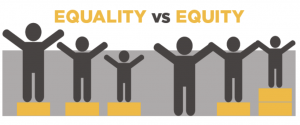Every day, whether it be in person or online, consumers are exposed to propaganda that affects their food choices. Alongside this, consumers are continually exposed to pieces of literature that judge certain eating habits, which have supposedly caused them to be more or less healthy. While this type of informal advice may be useful, there are certain flaws that have caused it from addressing and solving the entirety of the issue known as nutritionism. Throughout the book, In Defense of Food, Chris Pollan attempts to address the implications of the industrialization of food and explain how consumer habits has affected our overall health. Specifically, I found the study conducted by Weston Price extremely important to Pollan’s argument. However, I also believe it fails to address factors that may explain why certain eating habits continue to occur. Price conducted a study to analyze the Western diet in comparison to isolated populations that had not encountered ingredients such as refined flour, sugar, or vegetable oils. The study found little or no evidence of chronic disease, or tooth decay in these control groups which led him to believe either there was something in our Western diet that was present or missing, that was causing this problem. Eventually Price concluded that modern civilization had sacrificed the quality of its food for quantity and shelf life in terms of less vitamins and more calories. This is where I believe his argument failed to address the bigger picture, which are the various factors and barriers consumers face when making food choices.

No one purposefully chooses the “worst” foods for themselves. This is influenced by various factors that include, but are not limited to, socioeconomic status, food availability, physical access, and economic access. Understanding and addressing the barriers many consumers face is a step towards an equitable healthy solution for many. There is not one solution for all consumers as consumers live in different food environments and their choices are limited to what is available and convenient for them and their families. Factors, such as socioeconomic status may have an influence as to what is economically available for the consumers. Depending on the financial situation of the individual or family, they may have the resources to purchase healthier food choices or may have to be forced to purchase processed foods that are energy-dense. Another barrier consumers may face are the physical access of the foods. How far do consumers have to travel? Do they have a means of transportation? Lastly, food availability is crucial to consumers’ choices. What is readily available to them? Are there more fast food restaurants in there are? Are they being exposed to marketing of various fast food chains? Overall, it is one thing to say, “eat healthy,” and it is another thing to understand and address the various barriers consumers face when making food choices. The food environments people live and with the influence of many factors, may have positive or negative effects on individuals’ food choices and lives.

You make a great point that there are so many factors that need to be taken into consideration when it comes to what we are eating. As ideal as it would be for each and every one of us to eat local, fresh, organic foods it’s just not that easy! When we read this book I was curious as to why Pollan didn’t mention any ways for individuals to reach these healthy goals, I think if he had taken just that one step further his book would have made a bit stronger of an impression (at least on me personally).
Something I would consider a possible solution to these barriers to a healthy lifestyles is a program I recently learned about called Fresh Bucks. The program allows those in the Seattle area with lower incomes/those that utilize EBT to apply that money and even double it to be used at participating local farmers markets. I definitely think that money is a large barrier in living a healthy lifestyle, so this program is one that can help get us reach that goal while also promoting local farmers and agriculture.